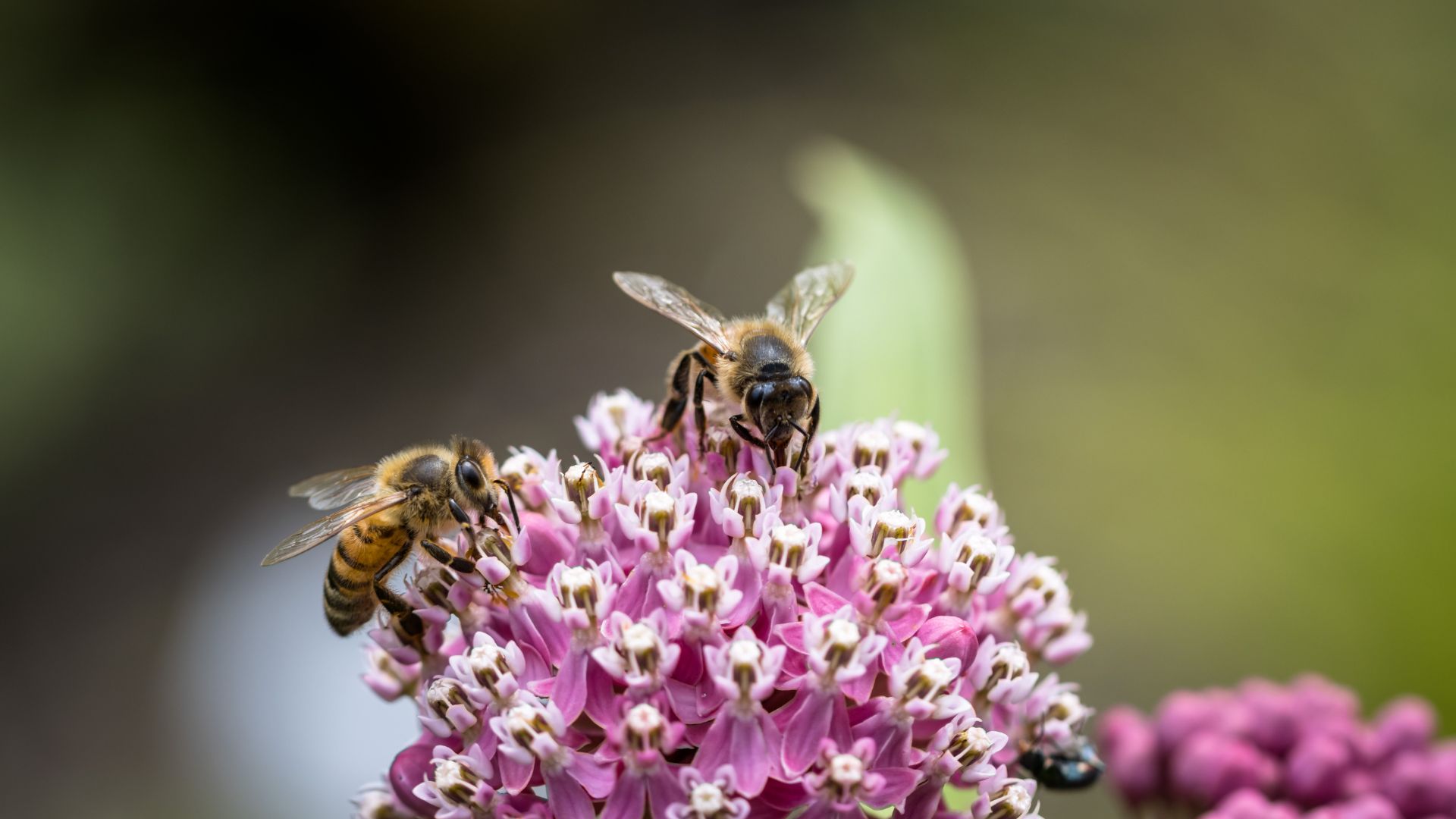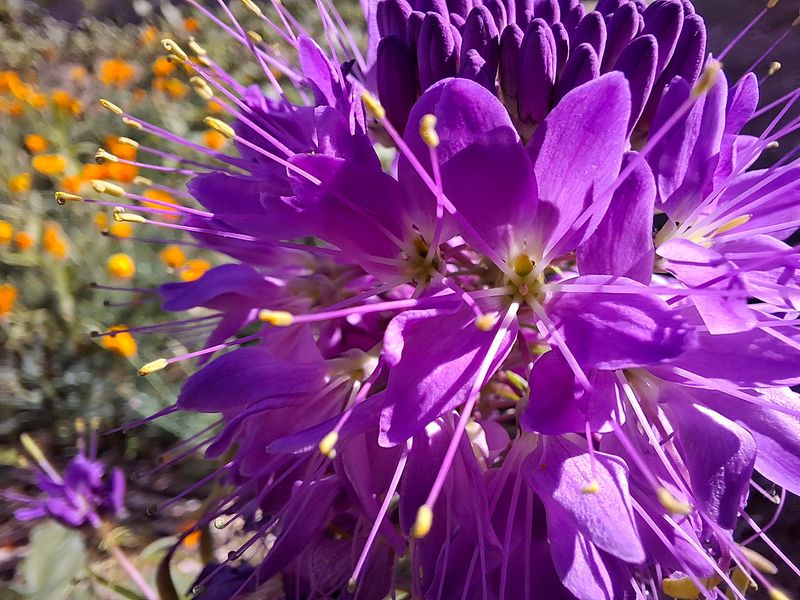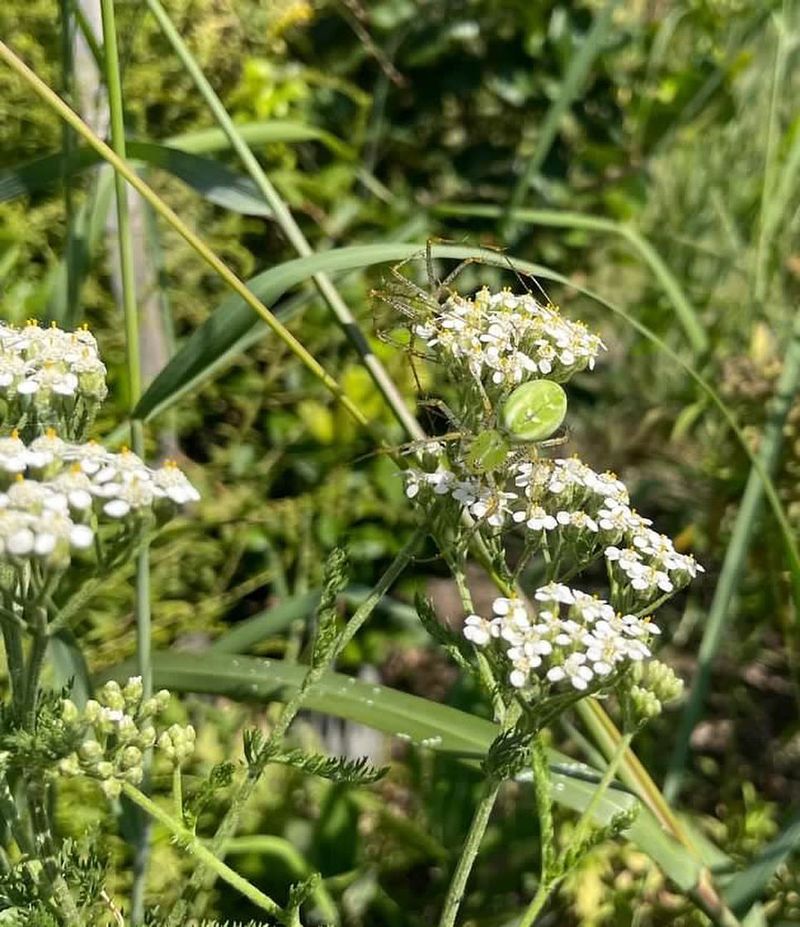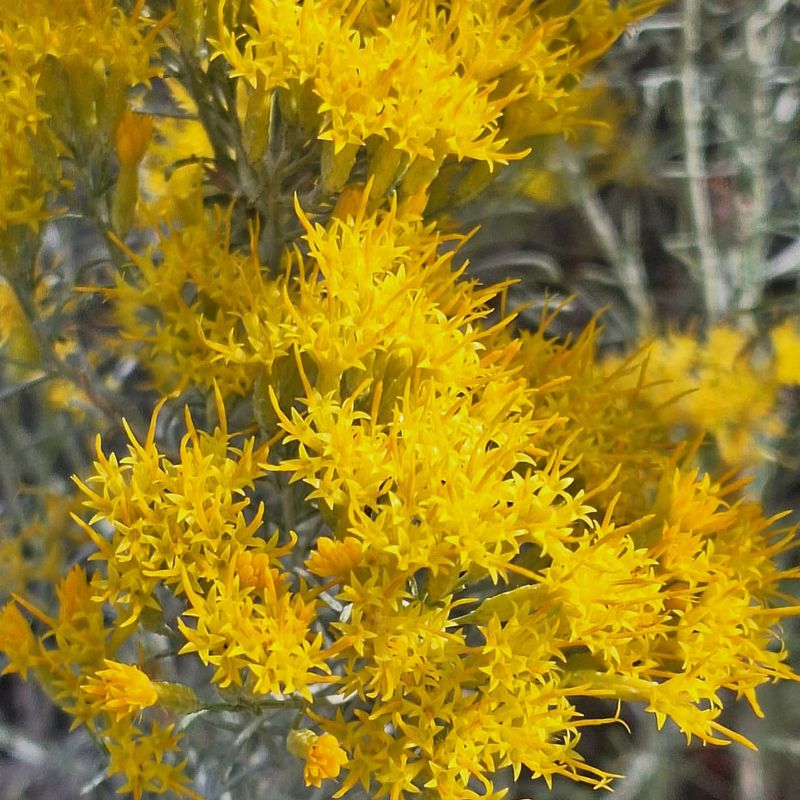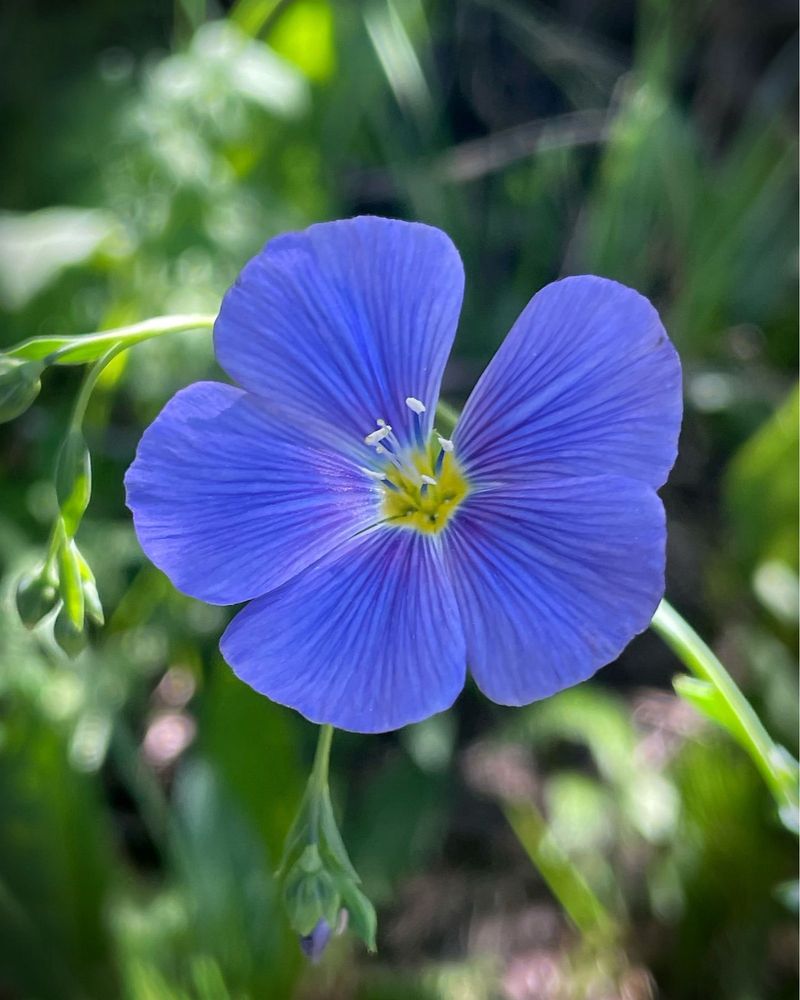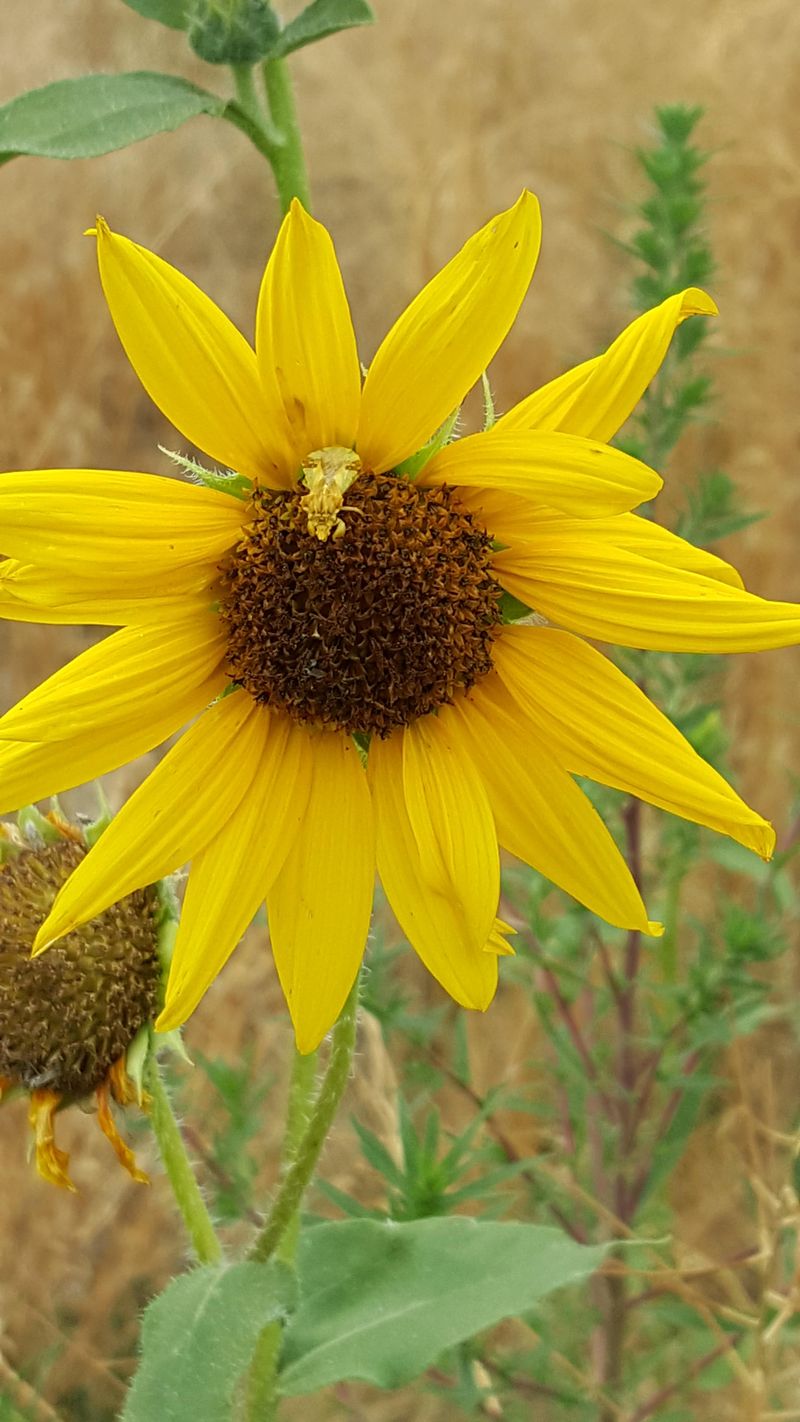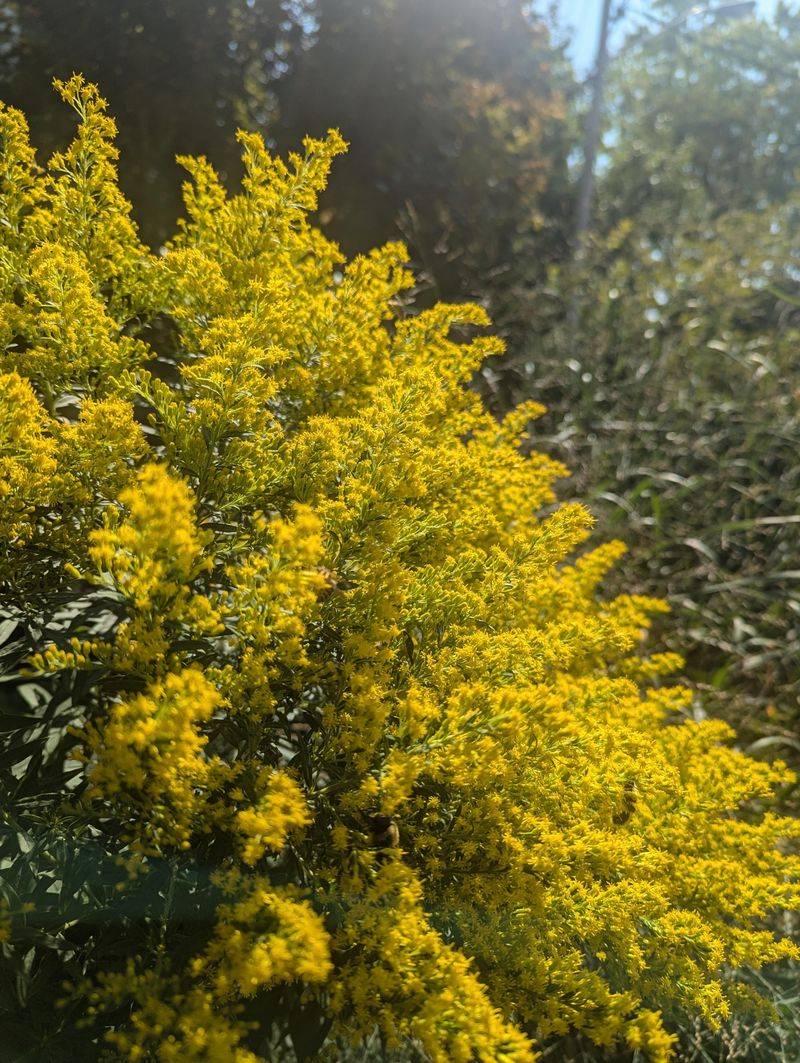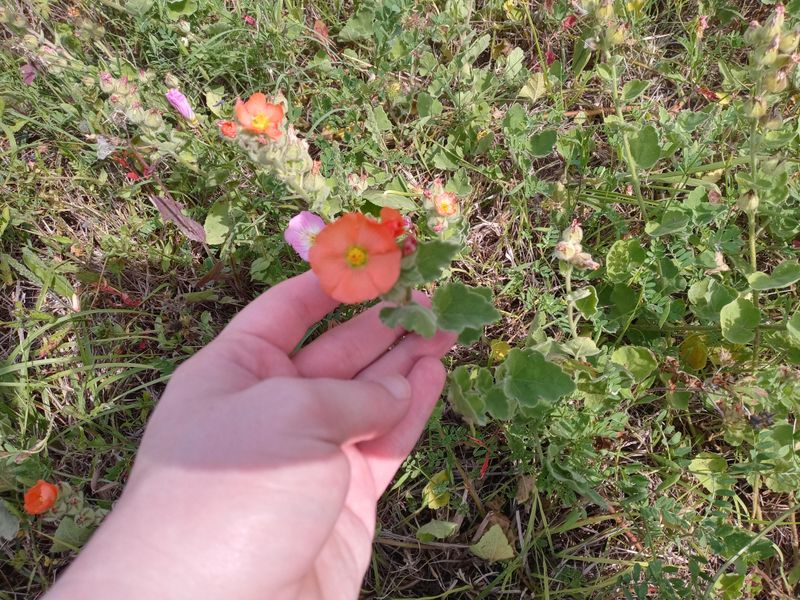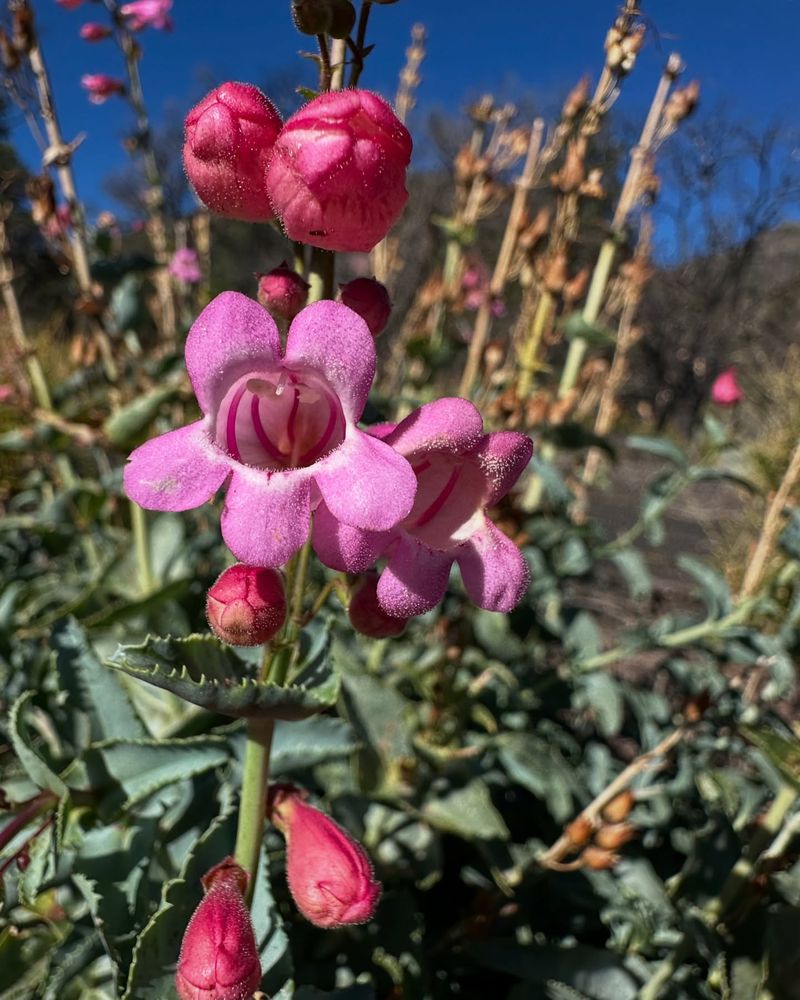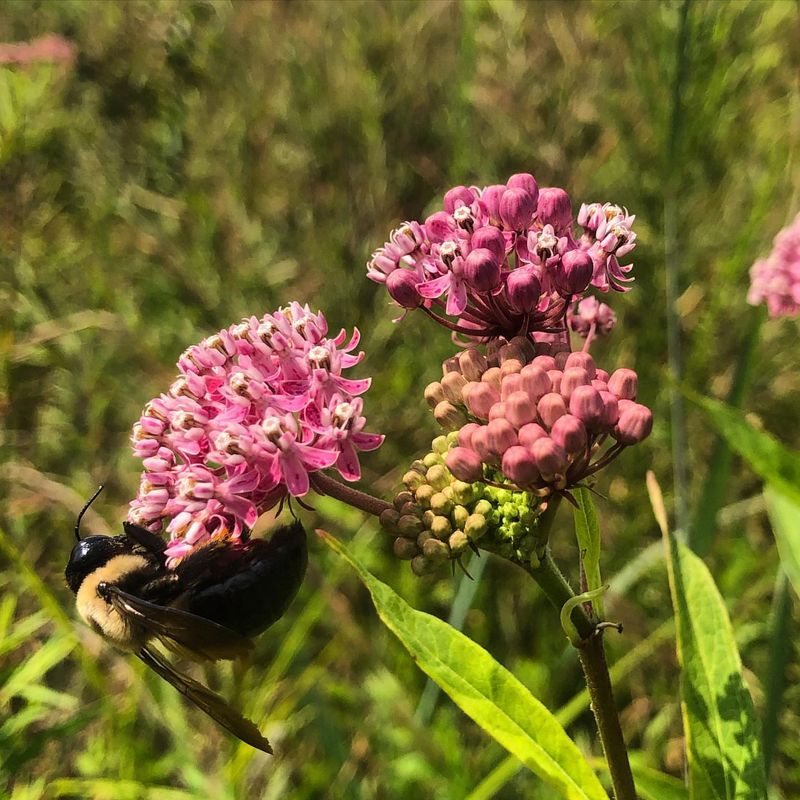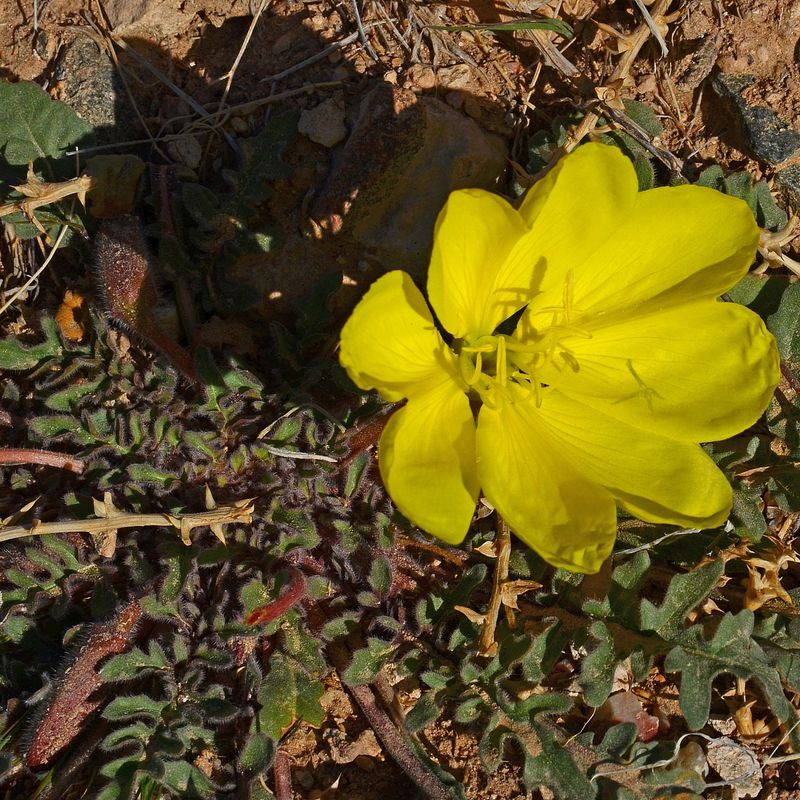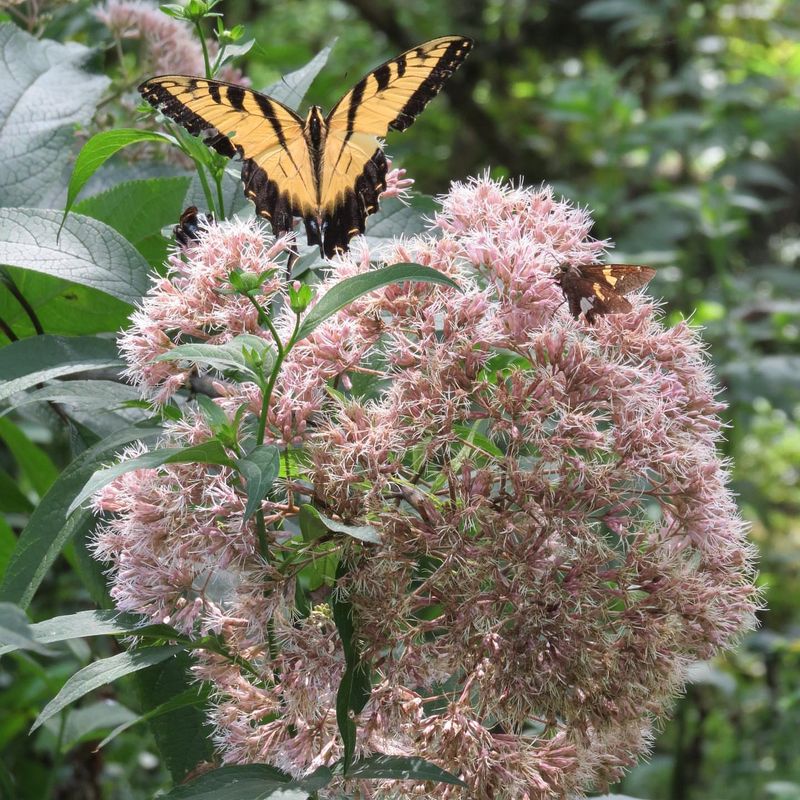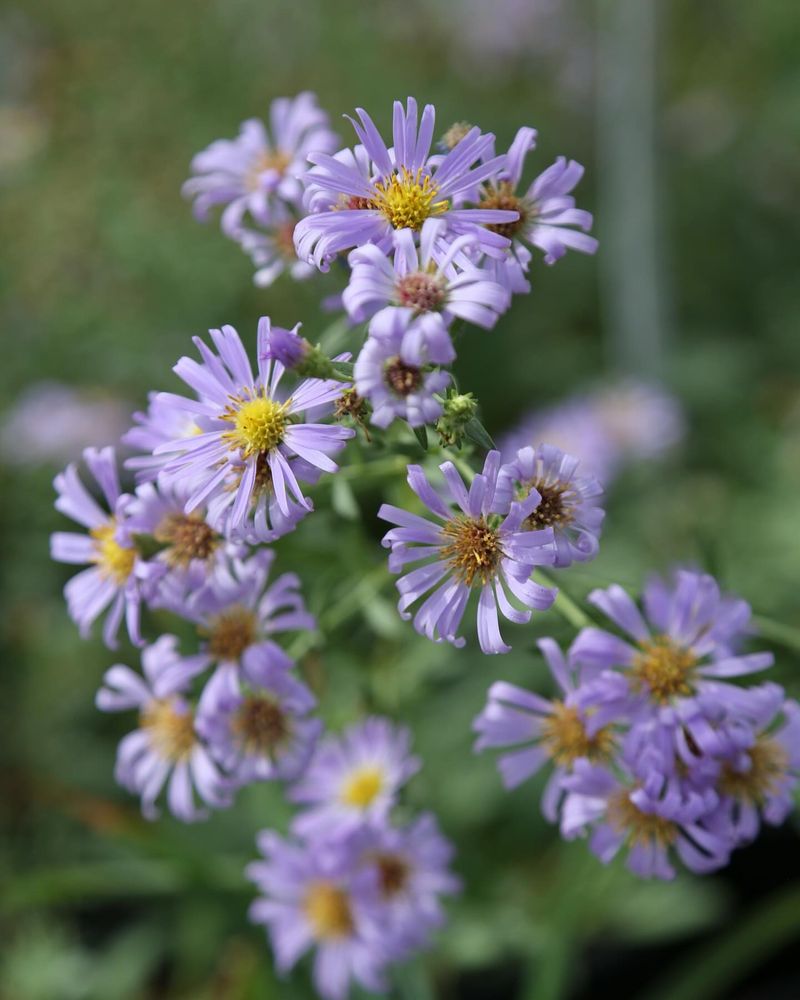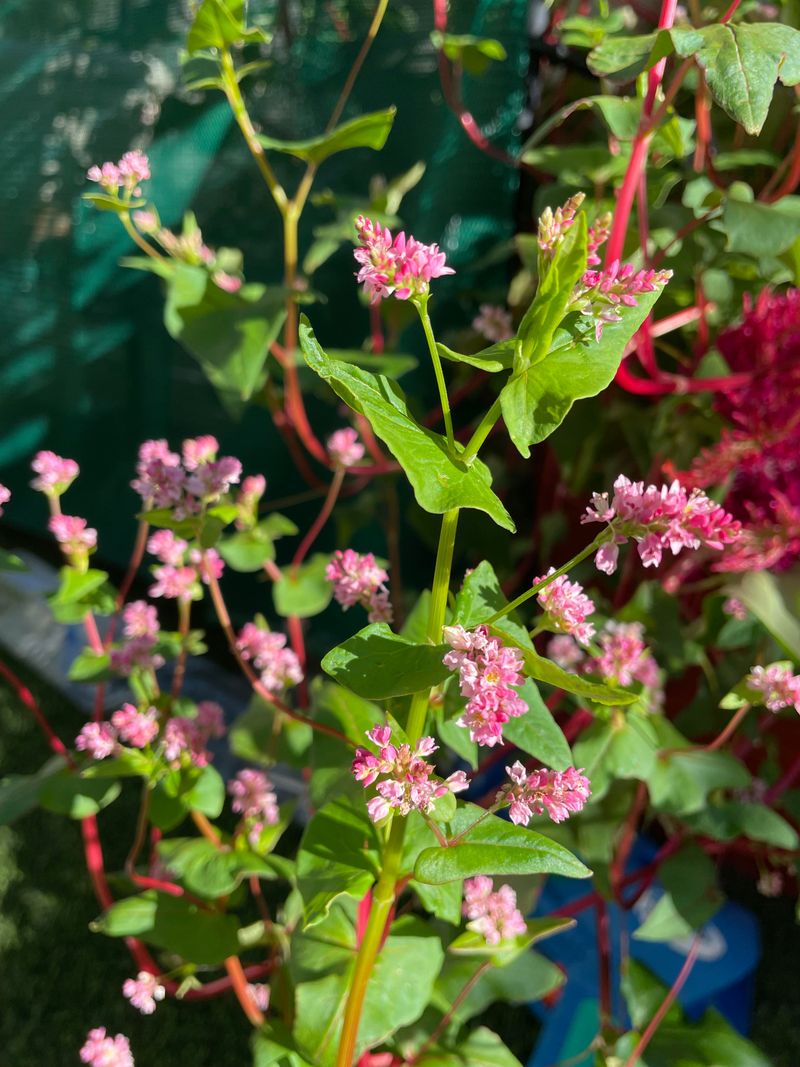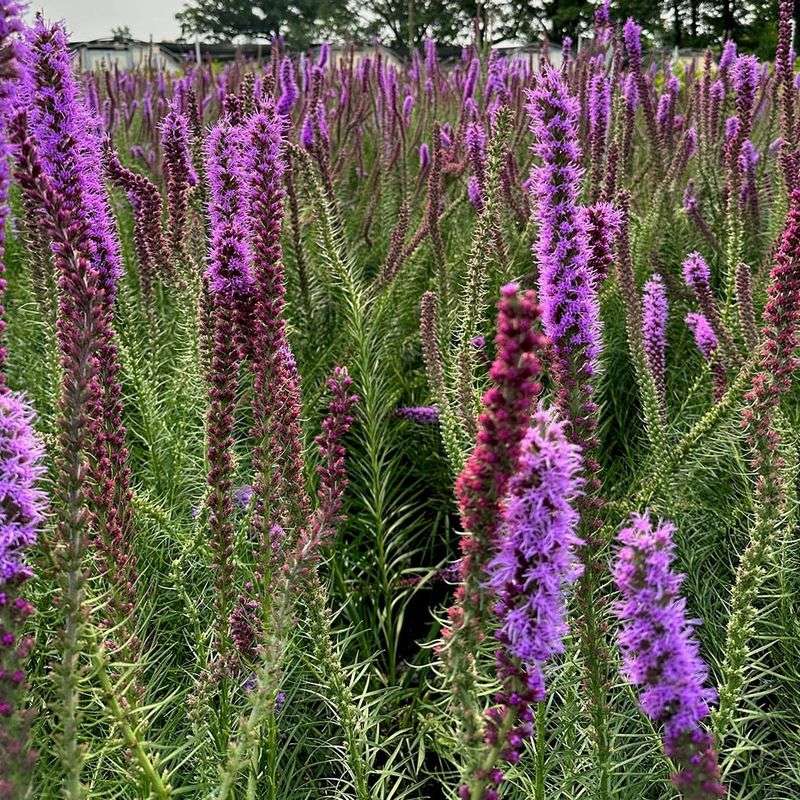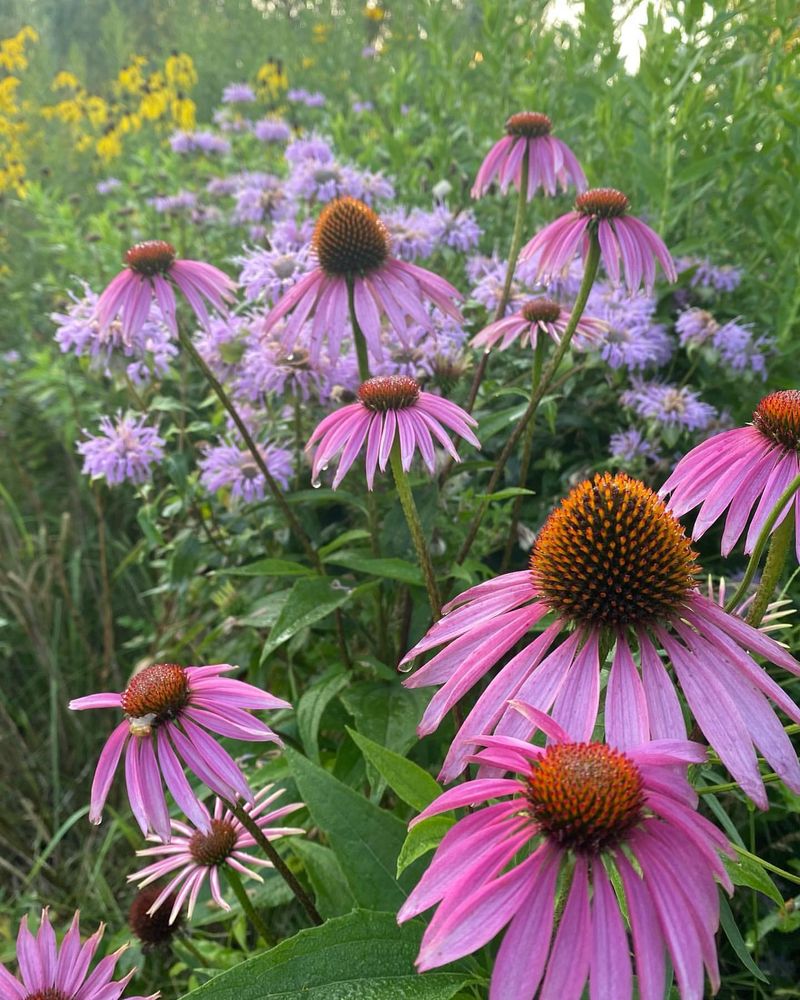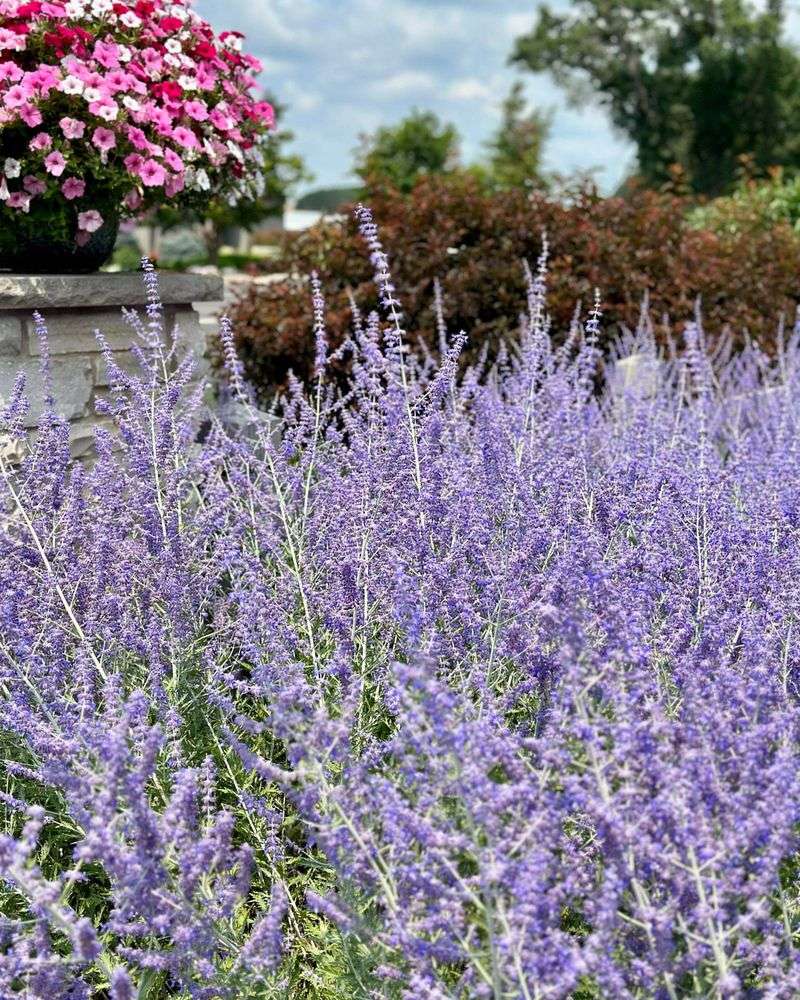August in Utah delivers a wildflower spectacle that’s both dazzling and vital. These native blooms light up the landscape while feeding hardworking bees through the lingering summer heat.
From desert sunflowers to fireweed, each blossom offers nectar and shelter when pollinators need it most. Their presence turns quiet gardens into lively ecosystems with wings in constant motion.
Whether you’re planting for the pollinators or just soaking in the show, these late-summer flowers make your garden come alive. With each bloom, you’re building beauty—and a haven for bees.
1. Blanketflower (Gaillardia)
Native to Utah’s dry landscapes, this drought-resistant perennial keeps blooming when other flowers have given up. Bees especially like the large center disk where they can easily collect pollen.
I’ve planted these throughout my front yard, and they require almost no care while attracting countless bees. The red and yellow daisy-like blooms hold up well even in August’s intense heat.
For best results, plant in full sun with well-drained soil. They’ll spread slowly over time, creating natural patches that bees will visit repeatedly throughout the day.
2. Rocky Mountain Bee Plant
Sporting bright pink-purple flower clusters, this annual native stands tall at 2-5 feet high. Bees can’t seem to get enough of its nectar, especially in August when many other plants have finished flowering.
Along Utah’s roadsides and disturbed areas, these plants pop up naturally. The interesting seed pods that follow the flowers will self-sow for next year’s display if you leave them in place.
Try scattering seeds in late fall for natural germination. I’ve found they grow best in areas with poor soil where other plants struggle to compete.
3. Yarrow
Flat-topped clusters of tiny white flowers make perfect landing pads for smaller native bees. The fern-like foliage stays attractive even when not in bloom, adding texture to any garden.
During August hikes in Utah’s mountains, I often spot yarrow growing wild along trails. Its ability to thrive in poor soil and withstand drought makes it perfect for our climate.
Bees particularly appreciate yarrow because it produces both pollen and nectar. Plant it in full sun to partial shade, and it will reward you with blooms from early summer through August.
4. Rabbitbrush
Golden yellow flowers cover this native shrub in late summer, creating a beacon for honeybees and native pollinators. The plant’s silvery-green foliage provides year-round interest in the landscape.
Driving through southern Utah in August, you’ll see hillsides dotted with rabbitbrush’s bright blooms. It’s one of the few plants that puts on a major show during the hottest, driest part of summer.
My desert garden relies on rabbitbrush for late-season bee activity. Once established, it needs no supplemental water and will thrive for years in Utah’s challenging conditions.
5. Blue Flax
Delicate sky-blue flowers open each morning and last just one day, but the plant produces new blooms daily. Early-rising bees particularly favor these flowers for their accessible nectar.
Throughout my garden beds, blue flax creates a light, airy feeling with its slender stems and simple five-petaled blooms. The plants sway gracefully in the slightest breeze, adding movement to the garden.
Sow seeds directly in fall for spring germination. While peak bloom is earlier in summer, in Utah’s higher elevations, blue flax often continues flowering into August, especially with occasional watering.
6. Sunflower
Wild sunflowers dot Utah’s landscape in August, their familiar yellow faces tracking the sun throughout the day. Bees love the abundant pollen found in the large center disk.
Along Interstate 15 near Nephi, fields of wild sunflowers create spectacular displays each August. Their sturdy stems hold up well to Utah’s occasional summer thunderstorms.
In my experience, bees visit sunflowers from sunrise to sunset, making them one of the most productive bee plants. Leave the seed heads in place after flowering for goldfinches and other birds to enjoy.
7. Goldenrod
Contrary to popular belief, goldenrod doesn’t cause hay fever—but it does cause bees to flock to its showy yellow plumes. The plant produces copious nectar that helps bees prepare for winter.
At my cabin near Park City, goldenrod creates drifts of yellow along the edges of meadows in August. The plant supports not just honeybees but also many species of native bees and beneficial insects.
For garden use, newer compact varieties stay more contained than their wild cousins. All types prefer full sun and average soil, thriving with minimal care in Utah’s climate.
8. Fireweed
Tall spikes of pink-purple flowers bloom progressively from bottom to top, giving bees weeks of foraging opportunity. The honey produced from fireweed is considered some of the finest in the world.
After wildfires in Utah’s mountains, this plant is often the first to return—hence its name. I’ve watched entire hillsides turn pink with fireweed in August, especially in the Uinta Mountains.
Consider adding fireweed to moist areas of your garden or along streambanks. The flowers open sequentially up the stem, providing a long season of interest for both bees and humans.
9. Globemallow
Distinctive orange cup-shaped flowers stand out against the silvery-gray foliage of this drought-tough perennial. The plant’s hairy leaves help it conserve water during August’s heat.
Driving through Utah’s desert regions, these orange beacons catch your eye even from a distance. Small native bees seem particularly attracted to the pollen inside each cup-like bloom.
My front yard’s hot, south-facing slope hosts several globemallow plants that need zero supplemental water. They bloom heaviest in spring but often produce a second flush of flowers in August after summer rains.
10. Beardtongue (Penstemon)
Tubular flowers in shades of purple, pink, or red are perfectly shaped for bees to crawl inside. Many Utah native penstemon species bloom in spring, but some varieties reflower in August with a bit of water.
Along the Wasatch Front trails, penstemon adds bright spots of color among the rocks and sage. Hummingbirds compete with bees for the nectar-rich blooms.
Growing several types in my garden extends the flowering season. The plants form neat clumps that stay tidy all year, with evergreen foliage that looks good even when not in bloom.
11. Milkweed
Complex flower structures produce abundant nectar that attracts bees throughout the day. While most famous for supporting monarch butterflies, milkweed’s August blooms are equally important for bees.
Several native milkweed species grow naturally in Utah’s varied habitats. The seed pods that follow the flowers contain silky fluff that catches the wind, spreading seeds throughout the landscape.
In my garden, I’ve planted showy milkweed in a sunny corner where it can spread naturally. The fragrant pink flower clusters have a sweet vanilla scent that carries on August’s warm breezes.
12. Evening Primrose
Large yellow blooms open dramatically at dusk and remain open through the night and early morning. Early-rising bees take advantage of the freshly opened flowers laden with pollen.
Throughout Utah’s desert regions, these hardy natives survive in the harshest conditions. The four-petaled blooms can be up to 3 inches across, making them easy targets for foraging bees.
My dry garden bed features several evening primrose plants that require zero care. They’ve self-seeded over the years, creating a sustainable colony that reliably blooms through August’s heat.
13. Joe-Pye Weed
Massive dome-shaped flower clusters in dusty pink create perfect feeding stations for dozens of bees at once. The tall stems (up to 6 feet) make this plant a dramatic backdrop in August gardens.
Along streams and in moist meadows throughout northern Utah, Joe-Pye weed creates impressive late-summer displays. The plant’s hollow stems provide nesting sites for some native bee species.
Despite its common name, this native plant isn’t a weed at all. I’ve planted it in the lowest, dampest corner of my yard where it thrives with minimal attention while attracting countless bees.
14. Aster
Daisy-like flowers in purple, pink, or white provide essential late-summer food for bees. The yellow center disks offer easily accessible pollen that bees can quickly gather.
Hiking through Utah’s mountains in August often reveals patches of wild asters growing in meadows and along trails. Their simple flower form belies their importance to pollinators preparing for winter.
Several native aster species grow well in home gardens with minimal care. I’ve found they pair beautifully with ornamental grasses to create natural-looking plantings that peak in August and September.
15. Buckwheat
Tiny flowers clustered into pom-pom shapes range from white to pink, often changing color as they age. The flowers produce high-quality nectar that makes excellent honey.
Utah’s rocky slopes and dry meadows support several native buckwheat species. The flat-topped flower clusters serve as landing pads for many types of bees, from tiny natives to larger honeybees.
In my xeriscape garden, sulfur buckwheat forms a ground-hugging mat that stays green year-round. During August, it’s covered with creamy flower clusters that attract a constant stream of bee visitors.
16. Blazing Star
Tall purple spikes create vertical interest in the August garden while providing nectar-rich flowers that bees can’t resist. The unusual blooming pattern—from top to bottom—extends the flowering period.
Driving across Utah’s valleys in late summer, you might spot these distinctive purple spikes standing above the surrounding grasses. Their unusual form makes them easy to identify even from a distance.
My garden features a patch of blazing stars that return reliably each year. The drought-tolerant plants need little care once established, yet deliver weeks of bee-attracting blooms.
17. Coneflower
Prominent cone-shaped centers surrounded by drooping petals give these flowers their distinctive appearance. Bees can often be seen clinging to the textured cones while gathering pollen.
Though not native to Utah, purple coneflowers have adapted well to our climate and bloom reliably through August heat. Their sturdy stems stand up to summer thunderstorms without staking.
In my perennial border, coneflowers have self-seeded into natural-looking drifts. I leave the seedheads standing through winter, providing food for birds after the bees have finished with the flowers.
18. Russian Sage
Airy spikes of small lavender-blue flowers create a cloud-like effect in the August landscape. Though not a true sage or native plant, it has naturalized in parts of Utah and bees adore it.
Along neighborhood streets in Salt Lake City, Russian sage thrives in the hellstrip between sidewalk and street. Its aromatic silver-gray foliage looks good even before the flowers appear.
Few plants handle Utah’s heat and drought better than Russian sage. In my garden, it grows alongside native plants, creating a water-wise combination that buzzes with bee activity throughout August.

